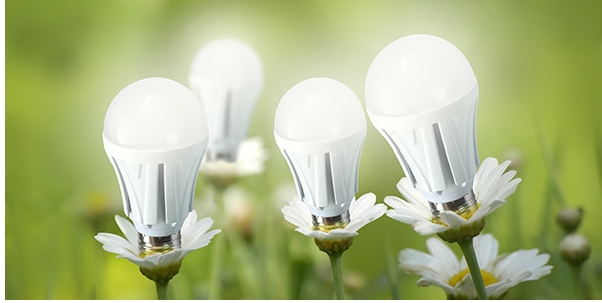Environment-friendly products have grown significantly in recent years. Why shouldn’t it be? After all, we humans have really damaged the earth. It’s time to correct our mistakes.
You don’t have to be an environmentalist. Small things like switching from disposable to rechargeable flashlights like the Baton 3 Pro can make a difference.
Amidst the chaos, one product that has gained immense popularity is rechargeable portable lights. These lights are becoming increasingly popular due to their convenience, cost-effectiveness, and positive impact on the environment.
Environmental Impact of Non-Rechargeable Flashlights
Non-rechargeable flashlights use non-rechargeable batteries, also known as single-use or disposable batteries. These batteries are the top contributors to environmental pollution. They are made of lead, mercury, and cadmium, which harm the environment and human health.
When these batteries are disposed of improperly, they can leak harmful chemicals into the soil and water. This eventually leads to ecosystem contamination and risks to wildlife and humans.
As with disposable batteries, rechargeable batteries also emit harmful chemicals when disposed of. Most of them, however, can be charged up to 1000 times if used appropriately. Therefore, you won’t throw them away as often as single-use products.
Environmental Problems with Non-Rechargeable Batteries
Non-rechargeable batteries are used everywhere. Your radios, toys, calculators, remote controls, electronic games, portable radios, flashlights, televisions, garage door openers, etc.
We have used single-use batteries for a long time. Imagine how much damage it has done to the environment. Here are four main indicators that assess non-rechargeable batteries’ environmental impacts.
- Consumption of Natural Resources – From production to transportation and distribution, natural resources are consumed. Energy consumption contributes to natural resource depletion.
- Climate Change and Global Warming – In addition to depleting natural resources, production and transportation release emissions and other pollutants that affect the environment negatively.
- Photochemical Smog Pollution – Vehicle exhaust reacts with sunlight to create harmful chemicals like ozone, gasses, and particles. This can worsen in cities, where heat is trapped and creates smog, leading to health problems and death.
- Eco-toxicity and Water Pollution – Careless handling of waste batteries can release toxic liquids and metals that harm aquatic ecosystems. Landfill disposal can also release harmful substances.
Benefits of Rechargeable Portable Lights
Here are some benefits to remember the next time you buy tools powered by disposable batteries.
Cost-Effective
Though rechargeable batteries were invented in the 80s, lithium batteries are still new on the market. The first commercial lithium-ion battery was issued 30 years ago, in 1991.
Right now lithium batteries are everywhere but unlike traditional batteries, they’re expensive. However, in the long run, it can be more cost-effective as it eliminates battery replacement.
Convenient
The biggest problem a rechargeable portable light solves is the need to buy batteries. Its ability to recharge using a variety of sources such as USB ports, solar panels, or traditional power outlets makes it highly convenient to use.
A rechargeable flashlight is ideal for use in areas without electricity or during power outages. It’s suitable for camping, hiking, and other outdoor activities.
Reliable
Rechargeable portable lights are designed to be rugged and resistant to the elements. They may feature waterproof or impact-resistant casings that withstand harsh environments and rough handling.
Another factor that contributes to rechargeable portable lights’ reliability is their ability to hold a charge. Unlike traditional lights that lose power over time or at extreme temperatures, rechargeable lights retain their charge for extended periods of time. This makes them an excellent source of light in emergencies or power outages.
Positive Impact of Rechargeable Portable Lights
The only difference between non-chargeable and chargeable portable lights is the battery. As the name suggests, rechargeable lights can be recharged repeatedly, whereas non-rechargeable lights need to replace the battery every time it’s fully discharged.
Reduced Environmental Impact of Battery Production
Rechargeable portable lights have a longer lifespan, which means fewer resources are needed to produce them. Fewer resources mean less environmental impact. It also reduces our dependence on non-renewable resources such as fossil fuels.
Reducing Landfill Waste
Rechargeable tools and items can significantly reduce waste compared to traditional tools using non-rechargeable batteries. By using rechargeable batteries, fewer batteries end up in landfills, reducing harmful chemicals released into the environment.
Reduced Carbon Footprint
Rechargeable portable lights use less energy and produce fewer emissions than traditional lighting options, resulting in a lower carbon footprint. By reducing energy consumption and emissions, rechargeable lights help mitigate climate change and reduce lighting’s environmental impact.
Promotes Sustainable Practices
By using rechargeable lights, individuals and communities can adopt more sustainable practices and reduce their environmental impact. This promotes a sustainability culture and encourages others to adopt similar practices, leading to broader environmental benefits.
What is Your Contribution to the Environment?
What’s your contribution to making the world a better place? If you’re doing nothing, start today by shifting from a traditional flashlight to a rechargeable flashlight. You can start with the Baton 3 Pro. This tiny yet powerful flashlight is reliable and durable.
Once you get your hands on this tool, you won’t need another flashlight for 10 years. As Barack Obama says, “We are the first generation to feel the impact of climate change and the last generation that can do something about it.” So make the move today! Click here to buy the Olight Baton 3 Pro, a rechargeable portable light.








